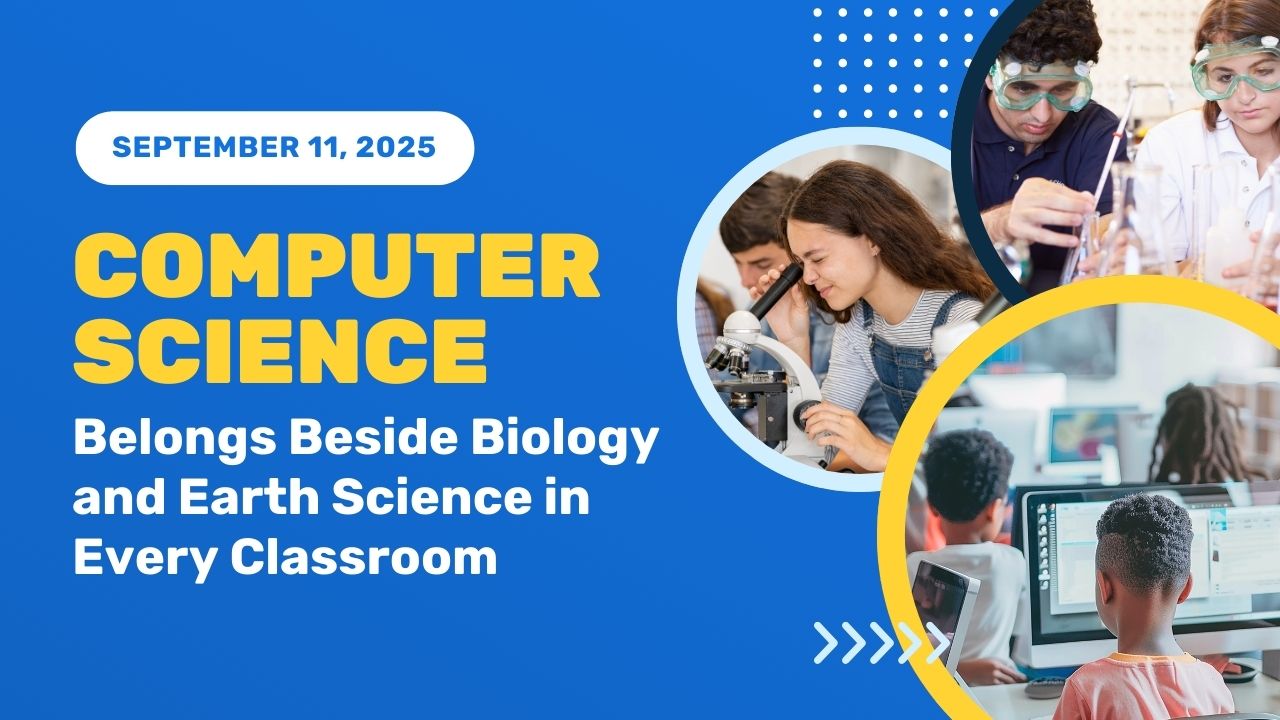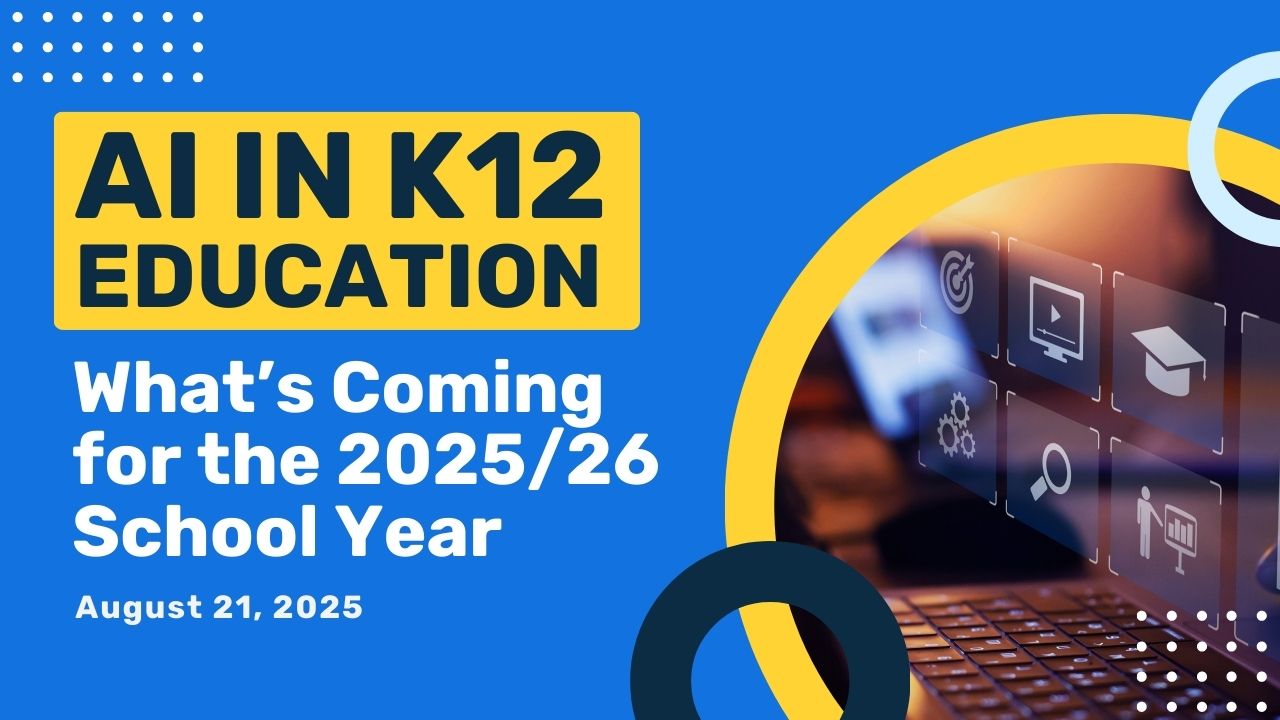I don’t want to date myself here, but I watched A LOT of Flintstones cartoons on TV when I was in middle school. And The Brady Bunch. And if I was able to pretend as if I was too sick to go to school (i.e. faking a cough, holding a thermometer over the stovetop to demonstrate a fever that exceeded 135, etc…) I would be able to watch the Holy Grail of daytime TV shows: The Price is Right.
Basically, I know a lot about screen time and how too much of it can melt a brain (from firsthand experience).
That’s why I get it when educators and parents get frustrated seeing kids glued to screens. But here’s the shift that changed everything for me: What if we didn’t fight screen time? What if we redirected it?
Instead of seeing screens as the enemy, we can see them as tools. And better yet—portals. Portals to creativity, to critical thinking, to real-world skills that matter far beyond the classroom. The trick is in the curriculum we use and the intentional choices we make as educators.
Start Where They Already Are
If you’ve ever watched a middle schooler talk about Minecraft or Fortnite or Roblox, you already know: the passion is there. These kids aren’t disengaged from learning—they’re deeply engaged in their own kind of learning. It just might not look like what we were trained to value.
So I started thinking: What if I stopped trying to pull them away from what they love and started using it as a bridge?
That small mindset shift led me to explore lessons that begin with student interest—not as a gimmick, but as a genuine entry point. When you start a class with “Today we’re going to talk about how your favorite video game uses physics and logic,” every head in the room looks up. That’s not nothing.

Play is a Trojan Horse for Real Learning
I’ve found that when students are building games, coding animations, or even designing a website, they’ll work harder and longer than they would on a worksheet. But here’s the kicker: they’re also doing real academic work.
Take a basic game design project. Students:
- Use math to set coordinates, calculate jump distances, or tweak scoring systems.
- Apply logic and sequencing to code behaviors
- Engage in problem-solving when their code doesn’t work, and they have to debug line by line.
They don’t see it as “school.” But the learning outcomes? They’re real, rigorous, and transferable.
Screen Time Is a Gateway to Skill Time—If We Plan It That Way
Let’s be honest: not all screen time is created equal.
Endless scrolling on TikTok? Probably not building workforce skills. Building a 2D platformer in Scratch and figuring out conditional statements to make an enemy chase a player? Now we’re talking.
The goal is to design learning experiences that are screen-based but skill-rich. That means:
- Choose tools that let students create, not just consume.
- Scaffold digital activities with real-world connections: “Here’s how a game mechanic is just like a physics formula.”
- Encourage collaboration: Pair students up to code together, test each other’s creations, or share feedback.
- Celebrate failure as part of the process. Debugging isn’t a mistake—it’s the heart of computational thinking.
I’ve seen quiet, shy students light up when they begin to start tutoring others on how to solve a problem in a collaborative project. That’s skill time. That’s engagement. That’s growth.

Digital Citizenship and the Bigger Picture
Screen time isn’t just about what students do on screens—it’s also about how they understand and interact with the digital world around them.
Digital citizenship is essential. We need to talk about:
- What it means to be respectful and ethical online.
- How algorithms shape our perspectives.
- Why protecting your data and privacy matters.
- How to create a digital footprint you’ll be proud of five years from now.
It’s amazing how open students are to these conversations—especially when you connect it to something they already use every day.
What Works Best for Me
Here are a few go-to strategies to make screen-based learning more meaningful:
- Project-Based Learning: Let students work toward something they’re proud to present. “Show me what you built” is far more motivating than “turn in your answers.”
- Give Choice: Allow flexibility in the tools or topics they explore. One student may love designing characters, another may love writing the code. Both are valid entries into deeper skill development.
- Use Peer Review: Students get better at explaining their thinking when they have to teach someone else or offer feedback on a peer’s project.
- Anchor Everything to a Skill: Whether it’s problem-solving, teamwork, or digital design, always connect projects to the kinds of skills that matter beyond the screen.
If you're reading this, you're probably already thinking hard about how to make your lessons relevant, engaging, and meaningful for the students in your room. You're probably also navigating challenges around screen time, tech access, and attention spans.
I get it.
But here’s what I’ve come to believe: Screens aren’t going away. And if we want to prepare our students for the world they’re going to inherit—one filled with automation, AI, design tools, and digital platforms—we need to give them the skills to navigate and shape that world.
That means shifting from a mindset of “screens are bad” to “how can I make screen time worth their time?”
It’s possible. It’s powerful. And honestly, it’s a lot of fun.














